Introduction
Quadruped Robots have four legs or limbs and move in a similar way to four-legged animals. They are able to traverse a variety of terrains in the same way that humans and animals can. This makes them very versatile and capable of exploring a wide range of environments.
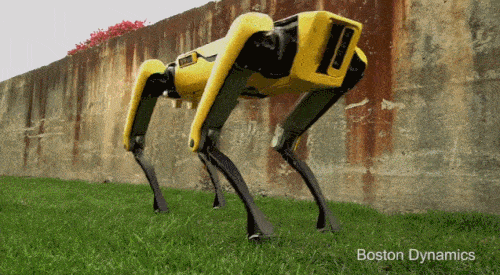
Quadrupeds are the superior choice for legged robots when it comes to mobility and stability of locomotion. Nature has proven the strength of four legs when it comes to passive stability, or the ability to remain standing without actively adjusting position. Quadrupeds are also more cost-effective and simpler to construct than robots with more legs, yet they can still provide stability.
Quadruped can be divided into two groups based on their leg structure: Mammal-type and Sprawling-type.
Mammal-type Quadruped
A Mammal-type robot has a standard posture in which its feet are positioned vertically downward from the base of the legs.

Sprawling-type Quadruped
A sprawling-type robot has a standard posture where the first leg segment (thigh) is horizontal and the second leg segment (shank) is vertical.
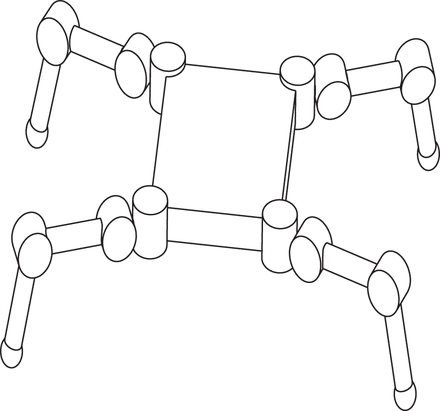
Our Quarky Quadruped is a quadruped that has a sprawling gait.
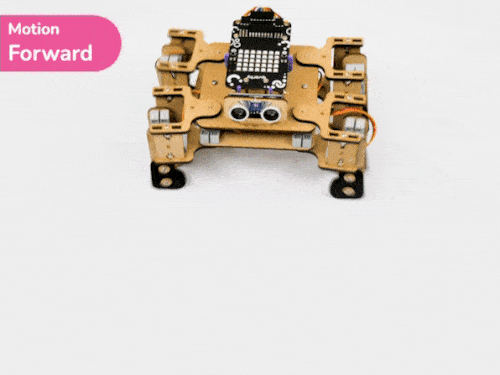
Sprawling-type quadruped robots are inspired by insects and spiders and have a leg configuration that is similar to them.
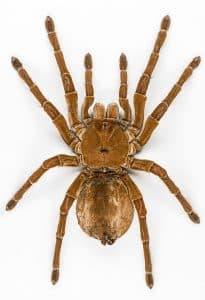
However, they are not able to replicate the looks and behavior of living pets such as dogs and cats. Despite this, sprawling-type quadruped robots are more popular and easier to build than mammal-type quadruped robots.
Quarky Quadruped robot is a basic representation of the spider movements, but it will not be able to replicate them exactly due to the difference in leg number – it has four legs instead of eight.
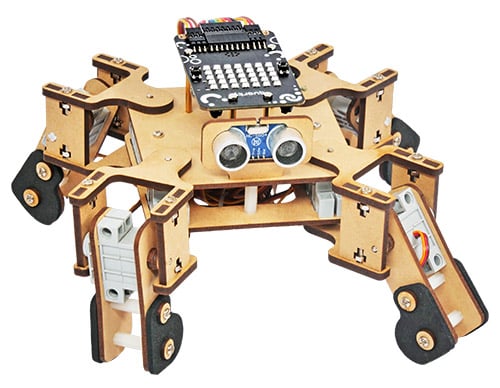
Servo Motors and Joints
We use 8 servo motors in total for our quadruped robot. 4 servo motors are located in the main body, and the other 4 servo motors are located in each of the leg assemblies (shank). The servo motors in the hip assemblies connect the hip assemblies to the leg assemblies. These 4 leg assemblies are then connected to the main body of the robot with the help of the 4 hip servo motors.
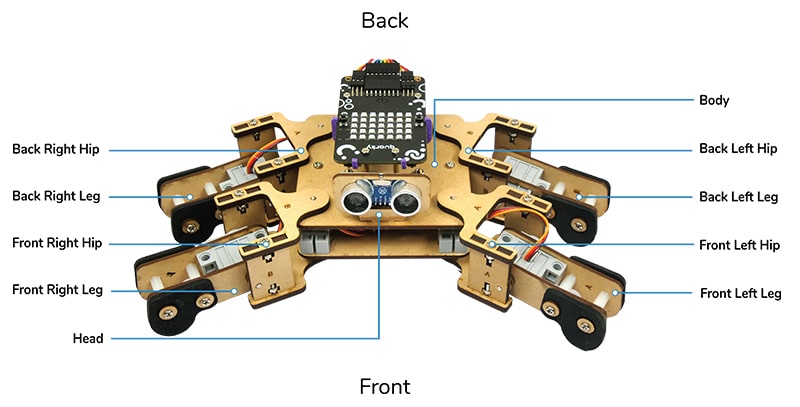
The servo motors in the quadruped‘s main body (hip) rotate to change the alignment of the leg. Then the servo motors in the leg rotate to change the orientation of the shank. The two joints to the hip joint and the leg joint demonstrate that each of the quadruped’s legs has two degrees of freedom.
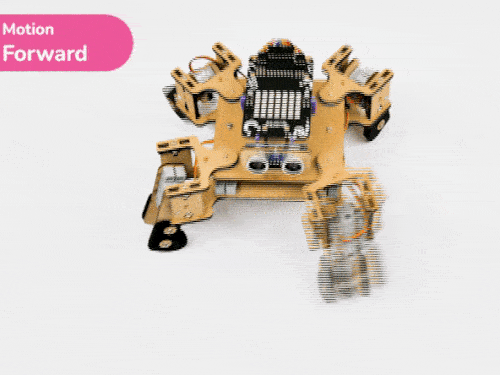
The Quadruped’s different movements are created by the programmed motion of the 8 servo motors.
Stability and Gaits
The quadruped robot has four legs for passive stability in a standing position. This is because the robot’s center of gravity (COG) lies within the quadrilateral formed by its four leg positions. To keep the robot balanced while walking, all eight servo motors must be controlled individually. This will ensure that the robot’s stability is maintained even when it is in motion, with not all four legs touching the ground.
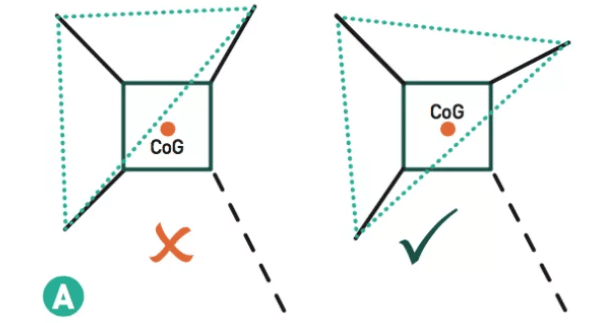
The robot lifts one leg at a time and keeps the other three feet on the ground. This ensures that its center of gravity (COG) remains inside the triangle formed by the three feet. If the COG goes outside the triangle for too long, the robot will fall over. This gait is the simplest walking gait to use.
Predefined Motions

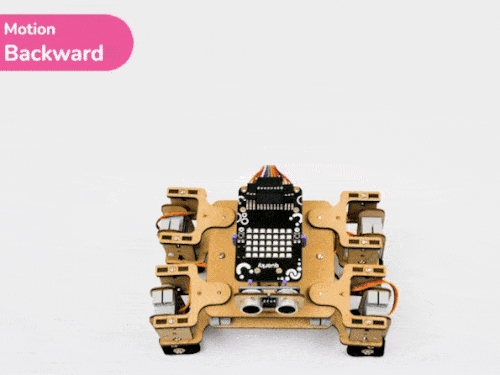
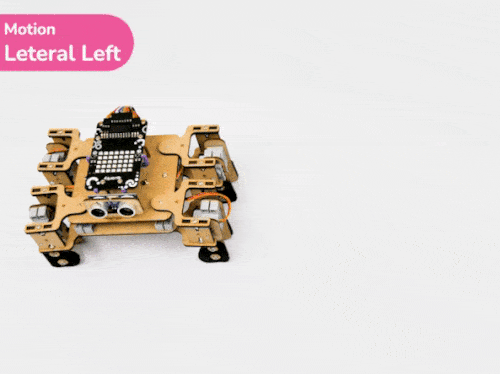

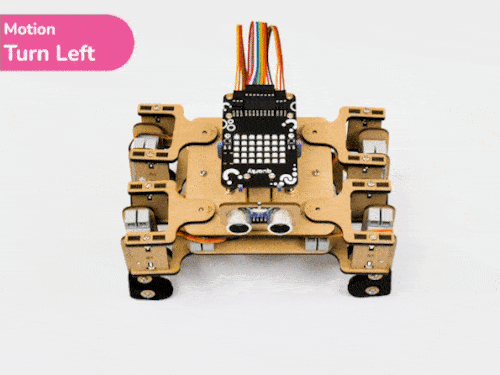
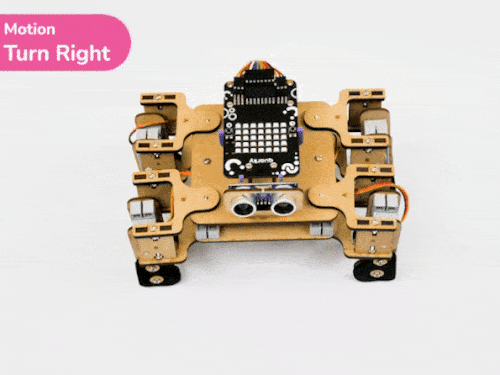

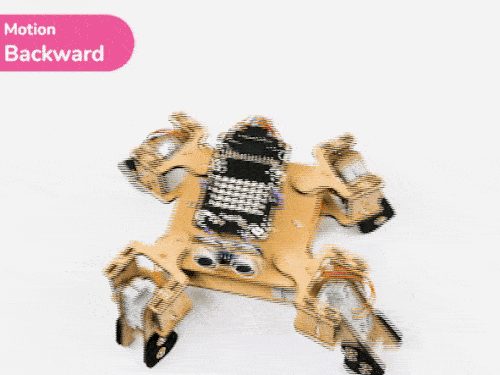
Predefined Actions
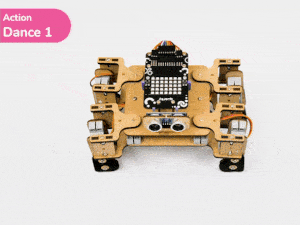

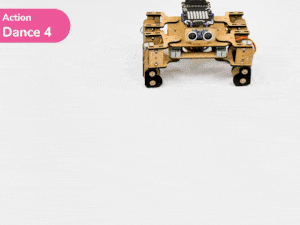
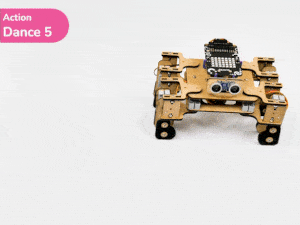
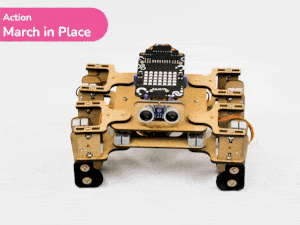
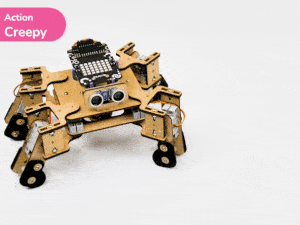
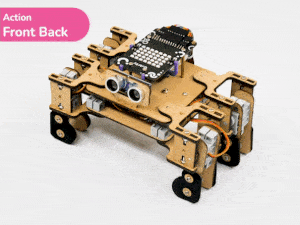

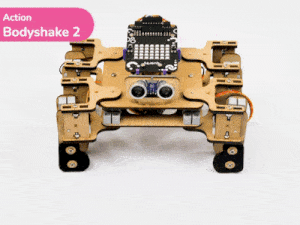
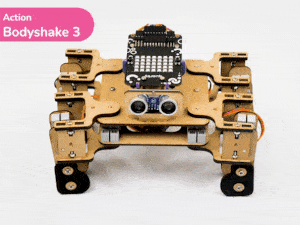
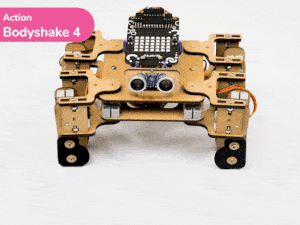
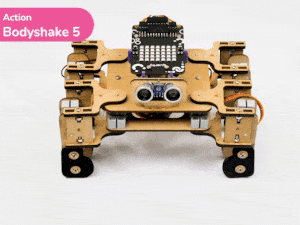
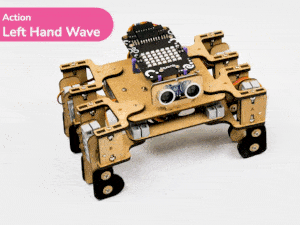
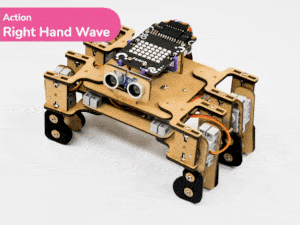

In conclusion, the Quarky Quadruped robot is a four-legged robot inspired by spiders and capable of maintaining its balance while walking. It uses 8 servo motors and 2 degrees of freedom in each leg assembly to create different movements and maintain stability. This robot is simple to build yet powerful in exploration and stability!



